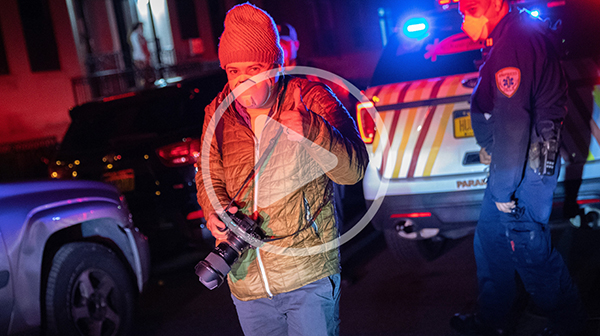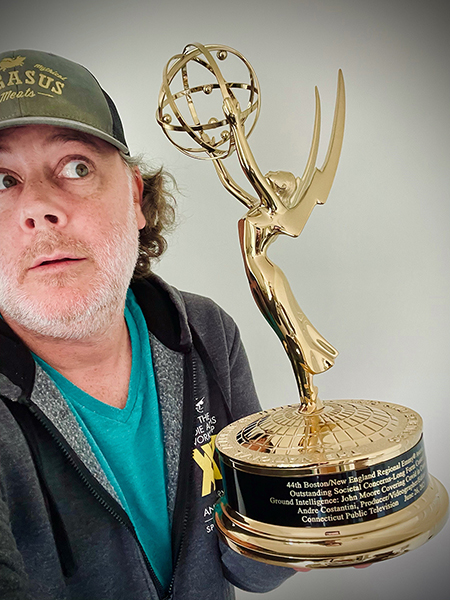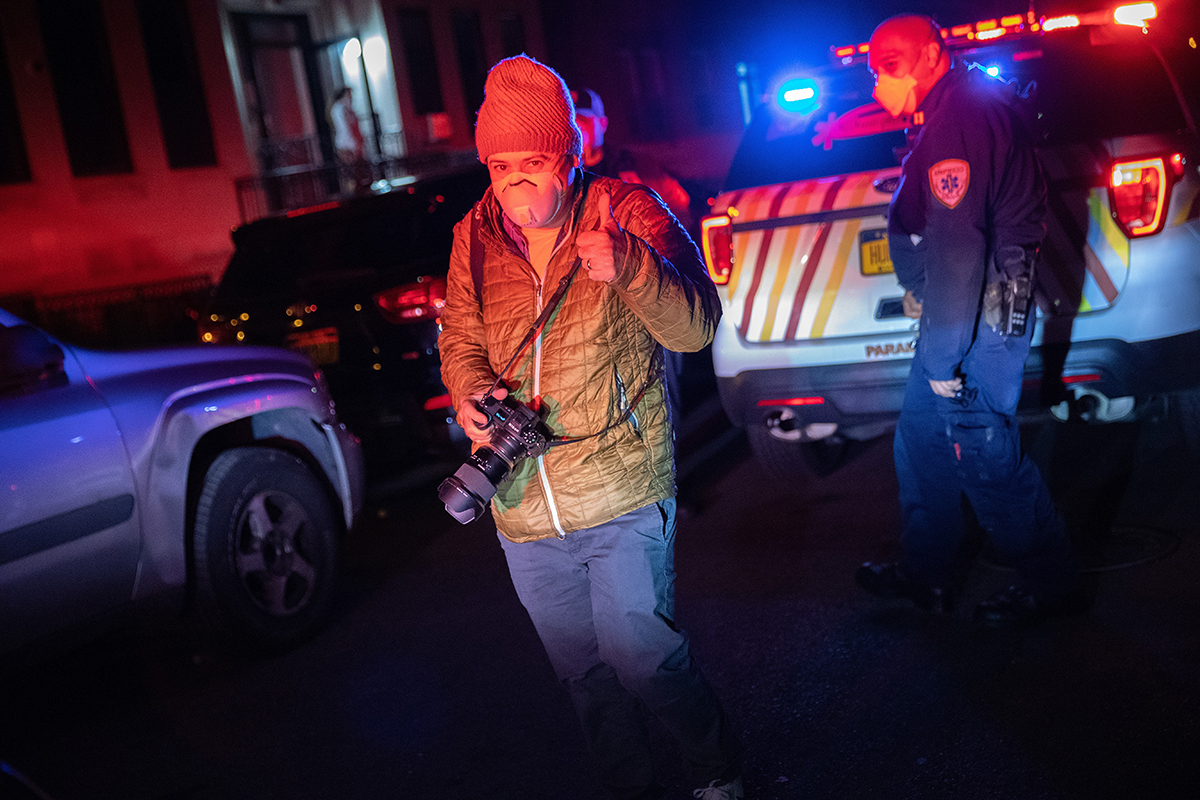An Emmy Win From a Tamron Pro
André Costantini takes home a Regional Emmy for a documentary on local COVID coverage by photojournalist John Moore.
More Photo Tips | Video Gallery | Photo Gallery | Enewsletter sign-up
By Jenn Gidman
Documentary by André Costantini

Watch André's Emmy winning video
For more than a decade, Tamron creative and technical consultant André Costantini has known John Moore, a Pulitzer Prize–winning photojournalist and senior staff photographer for Getty Images, whose photo of a crying Honduran toddler at the US-Mexico border won 2019’s World Press Photo of the Year. When the pandemic hit, John started documenting the initial outbreak and how it was affecting his own community in Fairfield County, Connecticut. “We talked about making a film, since we were both in the area and in lockdown, and so I started shadowing him as he photographed what was going on on the front lines of COVID,” says André.
Their collaboration proved fruitful in more ways than one. The resulting Ground Intelligence: Covering COVID With John Moore, a nearly 30-minute documentary that aired on PBS and Connecticut Public Television, highlighted the work of doctors and first responders, shed light on the tragedies and challenges around the pandemic, and showcased stories of survival. The film also earned André his first Regional Emmy, in the “Societal Concerns: Long Form Content” category.
“The goal from the onset was to tell a story about photojournalism, and how it can really make a difference in helping people to learn and understand,” says André, who helmed the project as the film’s producer, videographer, and editor. “That’s why I wanted to work with John specifically, because I knew his ethos. I wanted to tell the story of someone who cares about what they’re doing, and who’s involved in it in a very specific and material way—someone whose goal is to make the world a better place by doing what they love.”
In the film, John mentions how he wanted people to witness COVID in as real a forum as possible, not as seen through the news, social media, or any other filters. “When a big event or story happens, it can become like a game of telephone,” André says. “Someone may have something relevant, interesting, and important to say, but by the time that message goes through all of the usual channels, it’s lost. These were first-person, on-the-ground conversations with medical professionals, and with people directly affected by COVID. No filters, no lost messages.”
To shoot the film, André used, among other gear, a Sony full-frame mirrorless camera with the Tamron 28-75mm F/2.8, 70-180mm F/2.8 Di III VXD, and 17-28mm F/2.8 Di III RXD lenses. The majority of his footage, however, was taken with the Tamron SP 35mm F/1.4 prime lens on his DSLR. “The 35mm lens is extremely sharp,” he says. “It’s also fast and performs great at night and in available-light-only situations, which comprised much of what I was shooting for this project. I would pull out my other camera when I needed longer reach.”
Shooting during the beginning of COVID could have proved a nerve-wracking experience, but because John had PPE experience from his photographic missions in Africa, André felt confident they took all necessary precautions to keep themselves safe as they documented the early days of the pandemic. “John had a pretty good handle on that aspect of things,” he says. “Plus, talking to the EMTs, we were following many of the same best practices they were following, and they had an extremely low percentage of infection rates, so I felt good that our protocols were relatively safe.”
André’s ultimate mission was to present varying perspectives and stories from early to mid-2021, from the uncertainty felt in the very beginning of the pandemic, to the frustration experienced as lockdowns continued, and to the struggles and triumphs that emerged as the pandemic stretched on. “With our very small footprint, our microcosm in Connecticut, I hope that what I presented was a well-rounded view of how COVID felt in those early days, and how it affected this one community,” he says.
André felt privileged to be able to document this unique time period in history. “I had to figure out a way to weave this story together to make a film that was impactful,” he says. “What I was never worried about, though, was John being able to find the stories that needed to be told. Sometimes we’d go down one road to follow a narrative that seemed interesting, but it didn’t necessarily pan out, at least in terms of a narrative that fit into the film’s mission. That was OK. We would simply travel down the next road, which sometimes led us to places and stories we never expected.”
And how did André feel when he found out he’d won a Regional Emmy for his efforts? “Usually there’s a live event for these awards, but because of COVID, they did it virtually this year, at the end of June,” he says. “I was watching the program as they read the nominees and winners, and then my name was announced. I was like, ‘Oh, look at that!’ I’d had another film about Parkinson’s disease that I’d done for Connecticut Public Television that was also nominated, and I thought if any film had a chance of winning it would be that one. You never really know with these things, but I’m honored and proud that my film with John Moore took home the Emmy.”

Click image to view larger
More Photo Tips | Watch Videos | Learn More About Tamron Lenses | Photo Gallery
